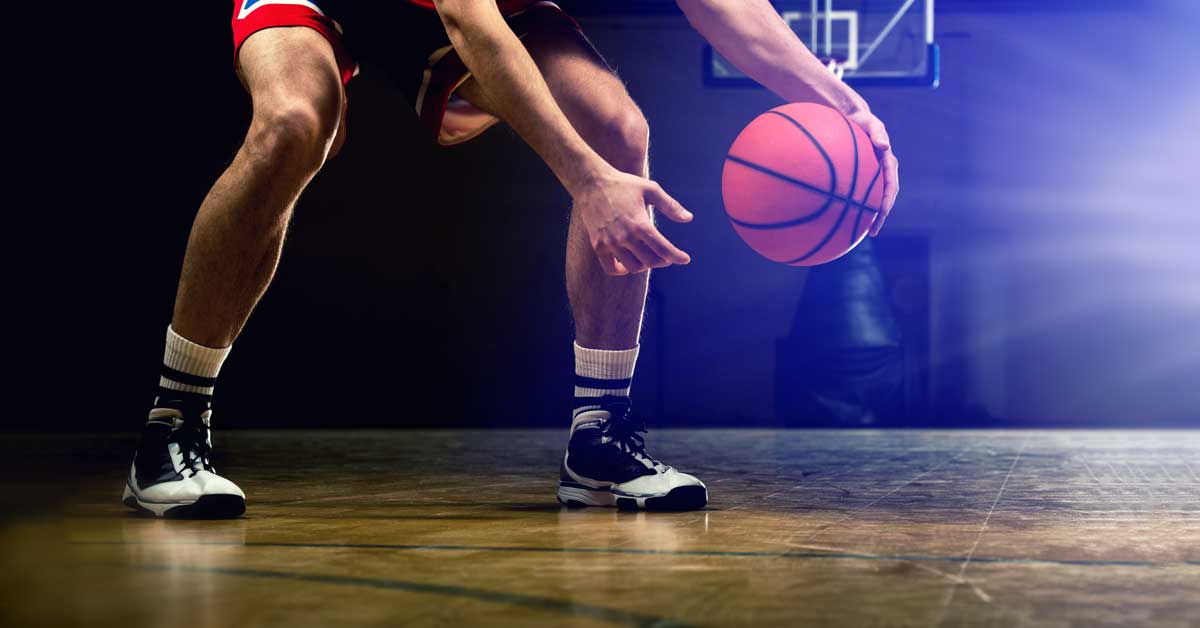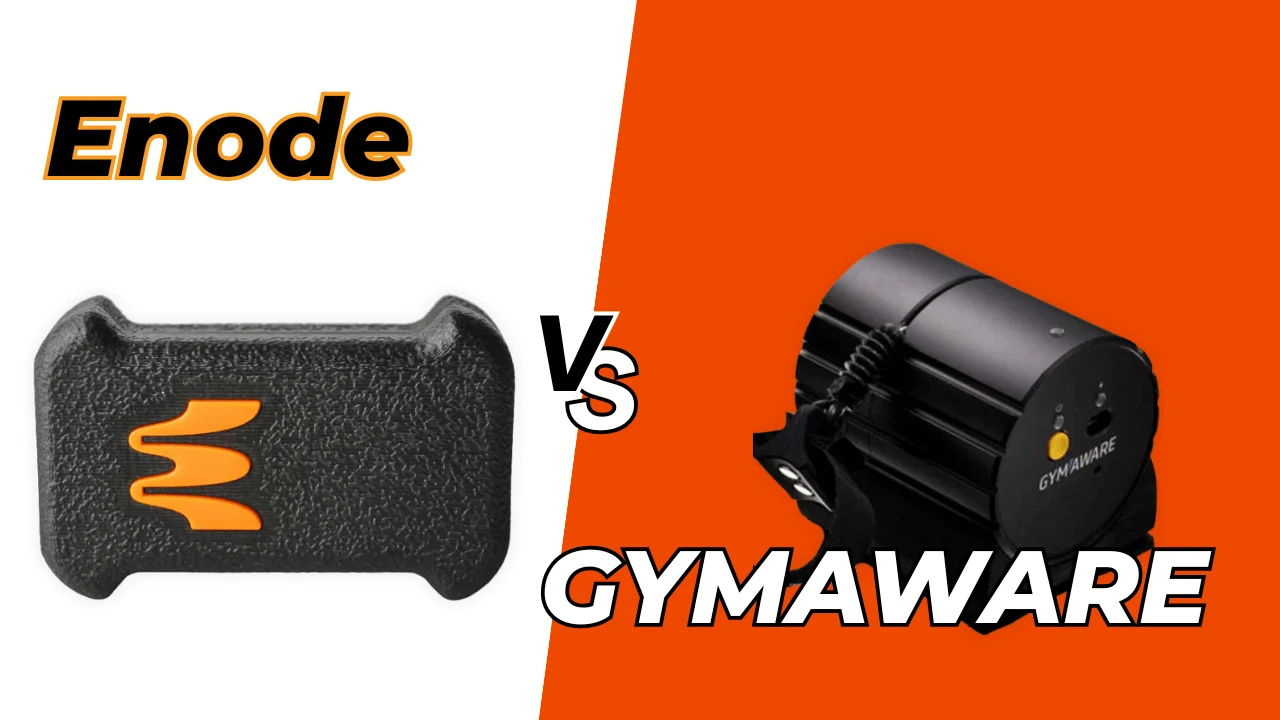The best ability is durability. My dad pressed this saying into my head when I was young, and he repeats it all the time. While I thought sprinting fast, jumping high, and expressing power were all superior traits, I tend to agree more and more with his wisdom the older I get and the more I work with athletes. This is especially true for high school basketball players, as many only have a few short seasons to express their athletic potential on the court.
Every year in the United States, anywhere from 100,000 to 250,000 ACL injuries occur, many of these requiring surgery and subsequent therapy, training, and recovery for the athlete to return to their sport or activity.1 Every year there is more and more research supporting training programs that work on strength, stability, balance, coordination, etc. to help reduce these numbers. These numbers should be dropping with all of this training…so why do these injuries keep happening? Is there something that we are missing with our approach?
Before we address innovative solutions, lets quickly touch on the common themes present in how these ACL tears and re-tears normally occur.2
- High ground reaction forces. The ability to land from a jump not only allows elite athletes to stay healthy, but to excel at their sport. This transfer of energy allows basketball players to transition from defense to offense quicker, get more rebounds, and recover from pump fakes. Without the proper strength and technique to minimize these forces, injury can occur.
- Valgus collapse. A second mechanism of injury identified is valgus collapse of the knee during sport. Again, let’s not demonize the position of knee valgus, but rather the ability (or lack thereof) of the athlete to control the knee through various positions. Coaches and non-coaches alike can almost immediately see this collapse in a basketball athlete on television during a replay of an injury.
- Planted foot (often “flat-footed”). The foot interacting with the ground is the most critical aspect of the human body when it comes to team speed and power sports. This is no different when identifying the mechanisms of ACL injuries. A proprioceptive disconnection between the brain and the foot can lead to compensation patterns up the lower extremity kinetic chain, especially at the knee.
- Knee near full extension. The final mechanism of injury is the knee, without proper control, approaching full extension in landing. Again, we are always going to talk about these positions not in good and bad terms, but more “in control” vs “out of control.”
[adsanity align=’aligncenter’ id=9066]
Complications for High School Basketball Players
A few common hurdles exist that compound the risk high school basketball players face when training and competing at elite levels. One common area of concern is the volume of jumping a basketball player is exposed to—not only in the course of plyometrics, but on the court through practice, games, and tournaments. A strength coach needs to take this into consideration when programming in-season sessions. Using a 10-meter fly or a max vertical jump test at the beginning of a session can give great information on the readiness (or depletion) of the nervous system. Keep your athletes happy and healthy as you drive towards better performance.
A second hurdle that I firmly believe needs to be addressed in most basketball programs is the amount and type of conditioning used throughout the season. Too often, we see mindless conditioning at the end of practice, either as punishment or to “get them ready for the fourth quarter.” Not only is this a detriment to the athlete’s physical and emotional state, it can also leave them susceptible to injuries. As strength coaches, it is our responsibility to consistently communicate with the sport coach about proper training programs, drills, and philosophies. Remember, the best ability is durability. Keep your athletes happy and healthy.
Too often, we see mindless conditioning at the end of practice, either as punishment or to *get them ready for the fourth quarter,* says @TomBroback. Share on XInnovative Solutions
1. Emphasis of Single-Leg Strength and Plyometrics
Current rehab practices do a great job of getting athletes comfortable with bilateral strength exercises and jumping exercises. However, jumping is going from two legs to two legs. There can—and, in my opinion, should be—a dramatic increase in the ability to improve single-leg strength and single-leg plyometrics, like hops and bounds. Most athletes are not pushed hard enough to handle higher single-leg loads. But most ACL tears and re-tears happen during single-leg landings, so why would we not want to improve single-leg movement capabilities?
Most ACL tears and re-tears happen during single-leg landings, so why would we not want to improve single-leg movement capabilities? asks @TomBroback. Share on X
Video 1. Rear-foot elevated split squat.
As for plyometrics, I see another gap in what we can improve! Again, most therapists and coaches do a great job of getting athletes to do sagittal plane jumping, doing box jumps or jumping over hurdles. An improvement would be an increase in hopping (ex. R leg to R leg) and bounding (ex. R leg to L leg) in multiple planes of motions. Sports are played in multi-directional capacities, so we need to train that as well.
Research shows 50% of all types of ACL injuries can be reduced with ACL injury prevention programs.3 This is phenomenal news to us in the sports performance community. In his book, Mike Boyle notes: “A combination of strength training and a properly designed and progressed plyometric program is the best ACL injury prevention program in the world.”4
Video 2. Forward and lateral single-leg box hops.
Single-leg strength is a key indicator in how prepared an athlete is for their sport, and for their ability to stay healthy. Most ACL tears happen on one leg, so athletes need to be strong (and confident) in a variety of single-leg positions and movement patterns. Landing skills and deceleration skills are additional factors that need to be incorporated, as good athletes change direction well but also a lot of injuries can occur during these moments of athletic competition.
Recent research additionally shows that up to 70% of ACL injuries are non-contact injuries.5 Athletes are typically twisting, turning, planting, or descending from a jump when the injury happens. This is a key indicator into why proper rehab and sports performance training are paramount for keeping athletes as healthy as possible. If we can work on controlling these landing and change-of-direction patterns, we can improve the injury rate of athletes.
2. Barefoot Lifestyle
High school basketball players spend an extraordinary amount of time in basketball shoes and flip flops. Although neither of these are conducive to optimal foot health or performance, I firmly believe one of the lowest hanging fruits for athletes is to get them out of their shoes more often at home. Spending more time barefoot will increase the strength, mobility and—most importantly—the proprioceptive awareness an athlete has with their body in space. You can’t grow a plant in a closet.
Spending more time barefoot will increase the strength, mobility and—most importantly—the proprioceptive awareness an athlete has with their body in space. You can’t grow a plant in a closet, says @TomBroback. Share on XNow, you don’t necessarily need to do this during training. Being an advocate for athletes to take care of their feet at home will keep them happy and healthy. A large hurdle to this might be athletes that live in colder weather states.
Video 3. Rolling a lacrosse ball underfoot is a simple exercise athletes can do for better foot health, particularly in cold weather states where athletes should spend more time taking care of their feet.
This change in behavior pattern will help with the planted foot mechanism of tear described earlier. The increase in proprioceptive awareness of the foot is only achieved by actually using the foot like it is intended. Additionally, if you truly want your foot to have a healthy relationship interacting with the ground, you need additional education on the benefits of being barefoot more often. This is one of the missing links I believe that needs to be addressed in the quest to decrease ACL injuries, among other lower-extremity dysfunctions.
3. ACL-RSI
An additional resource I think the sports community needs to be aware of is the ACL-RSI. This short questionnaire is an excellent insight to the psychology of an athlete in returning to sport following an ACL surgery and rehab process. This survey was designed to aid in the objective measurements needed to help determine if an athlete is ready to return to sport or not. There is even an app you can use to complete the survey! A few of the questions on the survey include:
- Are you confident that you can perform at your previous level of sport participation?
- Are you fearful of re-injuring your knee by playing your sport?
- Do you feel relaxed about playing your sport?
An athlete can be too far on the spectrum in either direction with this. An athlete that is too confident—yes, that is a thing—might not be fully aware of how well they are doing in rehab and could want to return to sport too early. However, an athlete that is not confident enough will be hesitant in sport, an attribute we all know is challenging to success and healthy play. I give credit to Liz Niemuth, DPT, OCS, for bringing this assessment to my awareness and her expertise in orthopedic rehabilitation for knee injuries.
[adsanity align=’aligncenter’ id=9049]
Better Outcomes on the Court
Single-leg training is a huge key for athletes to recover from ACL injuries and decrease the chances of it occurring. Increasing proprioceptive training, especially with that all-important foot-to-ground contact, is imperative for us to keep athletes happy and healthy. Finally, knowing the psychological readiness of a basketball player trying to get back on the court is paramount for future success and health.
Knowing the psychological readiness of a basketball player trying to get back on the court is paramount for future success and health, says @TomBroback. Share on XA great thing about this field is we are always improving and learning. A lot of great coaches, therapists, and surgeons are working on this problem. I hope in the next few years, we will have better answers to the question of how we can decrease ACL injury rates in basketball players of all ages. In the meantime, keep your athletes happy and healthy.
Since you’re here…
…we have a small favor to ask. More people are reading SimpliFaster than ever, and each week we bring you compelling content from coaches, sport scientists, and physiotherapists who are devoted to building better athletes. Please take a moment to share the articles on social media, engage the authors with questions and comments below, and link to articles when appropriate if you have a blog or participate on forums of related topics. — SF
References
1. Panzarella, M. (2015). ACL Injury 101 [Ebook]. The American Orthopaedic Society For Sports medicine. Retrieved 21 January 2021.
2. Schilaty, N. D., Bates, N. A., Krych, A. J., & Hewett, T. E. (2017). How Anterior Cruciate Ligament Injury was averted during Knee Collapse in a NBA Point Guard. Annals of musculoskeletal medicine, 1(1), 008–12.
3. Webster, K. E., & Hewett, T. E. (2018). Meta-analysis of meta-analyses of anterior cruciate ligament injury reduction training programs. Journal of orthopaedic research : official publication of the Orthopaedic Research Society, 36(10), 2696–2708.
4. Boyle, M. (2016). New functional training for sports.
5. Griffin, L. Y., Agel, J., Albohm, M. J., Arendt, E. A., Dick, R. W., Garrett, W. E., Garrick, J. G., Hewett, T. E., Huston, L., Ireland, M. L., Johnson, R. J., Kibler, W. B., Lephart, S., Lewis, J. L., Lindenfeld, T. N., Mandelbaum, B. R., Marchak, P., Teitz, C. C., & Wojtys, E. M. (2000). Noncontact anterior cruciate ligament injuries: risk factors and prevention strategies. The Journal of the American Academy of Orthopaedic Surgeons, 8(3), 141–150.





